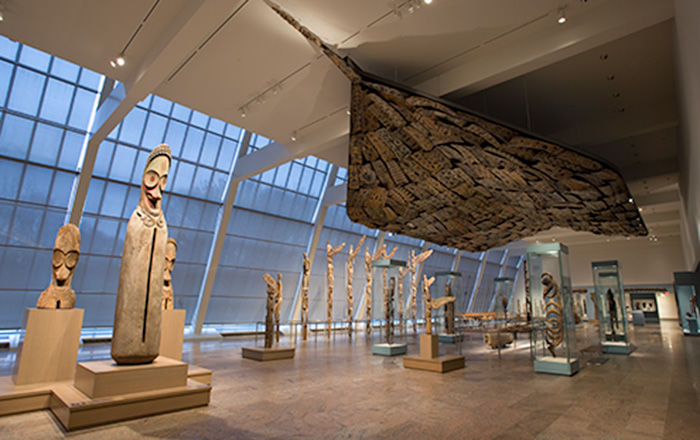Mgbedike (Time of the Brave) helmet mask
Only the strongest members of an Igbo community’s middle-age grade, composed of thirty- to fifty-year-old men, were eligible to wear this epic form of expression. In contrast to the gentle maiden spirit mask, also performed by this cohort, the forceful Mgbedike is propelled by a heavy gait. This tribute to cosmic bravery appears at secondary burials for prominent community members or during processions from village to village to challenge rival masks. Its aggressive comportment involves lunging at onlookers and dispersing crowds by brandishing a knife. Each unique headpiece has a name reflecting its highly individualized character. Here, an expansive openwork crown of avian and maiden mask forms rests above a pinched snout that terminates in a checkerboard of bared teeth.
Art historians Chike Aniakor and Herbert Cole have credited the extraordinarily imaginative Mgbedike headpiece to an artist named Iweze. Individual Igbo artists are appreciated as ndioka, or "men of skill," whose works respond to their communal contexts. Likely a farmer, Iweze resided in a northern Igbo community renowned for its sacred caves and located only a few miles from the bustling Niger River port city of Onitsha. This, his sole attributed work, was completed in or around 1918, amid transformations wrought by the global influenza pandemic and World War I, in which Nigeria participated as a British protectorate.
This image cannot be enlarged, viewed at full screen, or downloaded.
This artwork is meant to be viewed from right to left. Scroll left to view more.



